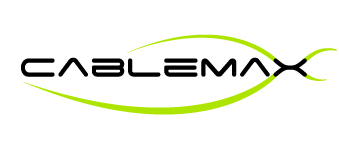FAQ
Question:
What browsers are compatible with the Cablemax website?
Answer:
Pretty well all browsers will work well except for some older than 5 years.
Question:
What payment methods does the Cablemax website accept?
Answer:
We accept payment by Visa, Mastercard and Amex, and, on mobile, Apple Pay, Google Pay and Shopify Pay. There are no card surcharges at Cablemax.
Question:
Is there a limit to the size of a transaction?
Answer:
The limit is $15000.00 per transaction. If you wish to make a higher value purchase, please split the purchase into multiple transactions.
Question:
What is the difference between solid and stranded rolls of cable?
Answer:
Solid cable is used for structured cabling i.e. installed in the walls, its solid copper conductor core is ideally designed to terminate onto patch panels and wall jacks. Stranded cable is used for the making of patch leads. Its copper conductor and multiple strands is flexible and wont easily break when continually flexed.
Question:
What is the difference between Cat5E and Cat6 cable?
Answer:
The main difference is the ability of the cable to pass all signals up to a particular carrier frequency (or signaling rate). Cat5e cable is specified to 100MHz. Cat6 cable is specified to 250MHz. Both specifications are able to transmit at 10/100/1000Mbits/second.
Question:
What type of DVI cable do i need?
Answer:
Here is a useful image guide to help direct you to the correct cable you require.
![]()
Question:
CCTV Glossary
Answer:
HAD. Hole Accumulated Diode. A type of CCD sensor with a layer designed to accumulate holes (in the electronic sense), thus reducing noise level.
CCD. Charge-Coupled Device. A "bucket brigade" shift register device which when combined with photodiodes is the modern imaging device, replacing the old tubes. When first invented in the 1970s, it was designed to be used as a memory device, as an analogue shift register. Most often used in cameras, but also in telecine, fax machines, scanners, etc.
CCTV. Closed Circuit TeleVision. A television system intended as a "closed" system, rather than broadcast, to be viewed by only a very limited number of viewers e.g. 1 camera to 1 monitor in its simplest form.
DSP. Digital Signal Processing. It usually refers to the electronic circuit section of a camera capable of processing or enhancing signals.
Iris. A means of controlling the size of a lens aperture and therefore the amount of light passing through the lens.
TVL. TeleVision Lines. The measure of resolution of either a camera output or a monitor display. It is limited by the frequency response of the system or the Chroma sub carrier.
Varifocal. A lens type that the focal length can be infinitely varied to give the exact image desired. It is similar to a manual zoom lens, except that a varifocal lens cannot be zoom tracked.
Digital video recorder. A system that allows the recording of video images in a digital form on one of many digital storage formats such as computer hard disc, DigitalVHS, DV, DAT or DVD. It is acceptable in English Courts for evidential purposes.
Question:
Is USB 2.0 backwards compatible to USB 1.1?
Answer:
Yes it is.
Question:
What is the maximum length of USB?
Answer:
The maximum length of USB is 5 meters. However it can be extended using active extension cables connected in series up to a total of 25 meters. USB 1.1 can also be extended up to 50M via Cat5 data cabling using Cat5 extender products.
